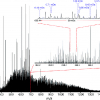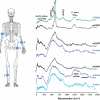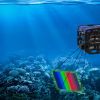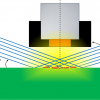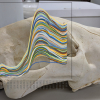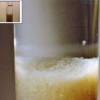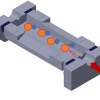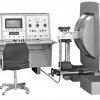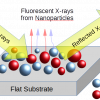Articles
The authors have developed a clever solution to be able to provide constant resolution, high-resolution mass spectrometry data across the full spectrum. In doing so, they have assigned 244,779 unique elemental compositions: a record.
This article reports on work using NIR spectroscopy to investigate the physiology of seals during diving. As well as the versatility of NIR spectroscopy, the technical achievements involved in placing a spectrometer on a seal without harming it and recording data underwater are amazing.
Estuaries are where much of our marine pollution is to be found, being the gateway between the land and the ocean. They are also where much of our seafood comes. So, knowledge of elemental contamination in estuaries is vital to protect us from the ingestion of polluted seafood.
Rechargeable lithium ion batteries (LIBs) have a significant role in modern society: from portable electronic devices to electric cars and bicycles. Indeed, I would be surprised if anyone reading this does not have a LIB on or near them now. Both NMR and EPR spectroscopies and their imaging modalities can provide useful information, which will prove important in battery research and the development of ever improving batteries.
The authors describe work they are doing to develop a green methodology to determine soil organic matter. If the World’s population is to be fed in the future, improvements to agricultural productivity are required and soil fertility will be key to this. Current methodologies are time-consuming and expensive, but visible-near infrared spectroscopy has the potential to replace them.
Burned bones are often found in archaeological sites as a result of fire or funerary practices and are often the only preserved human remains. Using inelastic neutron scattering, infrared and micro-Raman spectroscopies, the authors can reach definitive conclusions as to the temperature at which the bone was burned. This enables archaeologists and anthropologists to learn more about how ancient civilisations used fire for funerary, burial or cooking purposes.
There are now a huge number of small-scale gold miners who scratch a living (literally) from poor-quality gold deposits. One essential step in the process to produce the end product, pure gold, uses mercury to capture the gold mixed in with rock and other minerals. The quantity of mercury released annually by small-scale gold miners alone is estimated to be 3000 tons—37 % of global mercury pollution! Whilst this causes local pollution, much of the mercury ends up being distributed around the world as droplets in “mercury flour”. This enters the water supply and hence the food chain of us and other animals. Amongst all the bad news, there is a glint of good news. Chemistry can come to the rescue and can help recover the mercury left behind by the process, and, because gold itself is a by-product, the process could be self-funding.
An interesting insight into, well, a week in the life of the author as a fourth-year PhD student. Katie is working on investigating a way of detecting liver damage using spectroscopy, which is “about as interdisciplinary as you can get”! I’m sure all readers will find it interesting and it may be helpful for those you know who may be considering a PhD.
The authors look at two important areas of recycling of waste materials: concrete and plastics. If aggregates are to be recycled from concrete, the presence of pollutants (plastics, foams, brick etc.) and the degree of removal of cement mortar from the aggregates must be assessed and monitored. NIR hyperspectral imaging with PLS does a good job of both tasks.
Coral reefs have been used as examples of climate change in action for decades, since the “bleaching” caused by corals stressed by heat expelling their symbiotic photosynthesising algae is such a dramatic effect. Jonathan Teague, Jack Willans, Michael Allen, Thomas Scott and John Day describe their work in developing a hyperspectral imaging system that can be deployed on a submersible remotely operated vehicle to monitor coral health through changes in their natural fluorescence
Total reflection X-ray fluorescence (TXRF) is a “Cinderella” technique: not widely known but with great potential. The author and other members of the TXRF Workgroup are making strenuous efforts both to spread the word about TXRF and to improve communication within the TXRF community. As Ramón points out, atomic absorption or plasma spectroscopies may be the “go to” techniques for many, but TXRF is worthy of consideration.
A fascinating update on Brillouin spectroscopy, in particular “Brillouin microspectroscopy: in search of the mechanical properties in biological systems well below a wavenumber”. They show that the Brillouin measured elastic modulus clearly varies between regions of a biological sample, even if sometimes only by small amounts. Exactly what this is telling us and for what it is most useful or relevant is currently an area of active debate and remains to be seen.
This article provides a valuable summary of the choice of sample clean-up methods available for the quantification of small molecules in body fluids. What are the key factors? Judy outlines the principal processing methods and provides practical advice on protocol development using quantification of serum testosterone in serum samples as the model compound.
Knowledge of the origin of bones has applications in anthropology, archaeology and forensics; NIR spectroscopy, even with handheld instruments, is showing promise in being able to differentiate bones from different species.
Spectroscopy is widely used in forensics, but the determination of the age of documents was one application I had not considered. With a huge variety of papers and inks available, each with their own ageing profiles, and with such ageing depending on environmental factors, the determination of the age of a document is not straightforward. However, infrared spectroscopy and chemometrics may have the answer.
Jacques Thierie’s article raises a seemingly impossible observation: that in some cases, transparency can exceed 100 %.
Nick Polfer gives an excellent introduction to the recent technique of infrared ion spectroscopy. Ions held in the ion trap of a mass spectrometer can be probed with a tuneable light source, and its photodissociation studied as a function of the photon frequency. Nick believes that the technique will make an impact in small molecule analysis, such as metabolites, drugs and classes of molecules containing many isomers.
Clemens Anklin gives a short history of the commercial and technical development of NMR. From the first measurement of nuclear spin in 1937 by Rabi and his 1943 Nobel Prize to recent developments in small NMR spectrometers and instrument company changes.
In this work we demonstrate the suitability of confocal Raman microscopy for the characterisation of carious dental tissues. Samples of enamel and dentine, presenting carious lesions in different stages of progression, were evaluated by comparing the depolarisation ratio of the PO43– symmetric stretching band at 959 cm–1 in the different tissues. Both line and area scans were performed to gauge these variations. Moreover, the obtained results were compared with the tissues’ behaviour when interacting with ultraviolet radiation, namely the induced fluorescence in some tissues. The depolarisation ratio has proven to be a valuable tool in recognition of demineralisation of both enamel and dentine due to caries. The analyses of the collagen bands in the dentine sample turned out to be more difficult to evaluate due to high fluorescence in the carious region.
Nanomaterials find widespread applications in many fields of science and nanotechnology, especially as catalysts in the chemical, bio-nanotechnology, nano-electronics and pharmaceutical industries. Understanding the physical and chemical properties of nanoscale materials is important, not only because of the fascinating nature of the subject, but also due to their potential applicability in almost every branch of science and technology. Nanostructured materials offer interesting properties, because at the atomic or molecular scale, the physical properties of a material become size dependent due to the quantum confinement and surface states effects.

